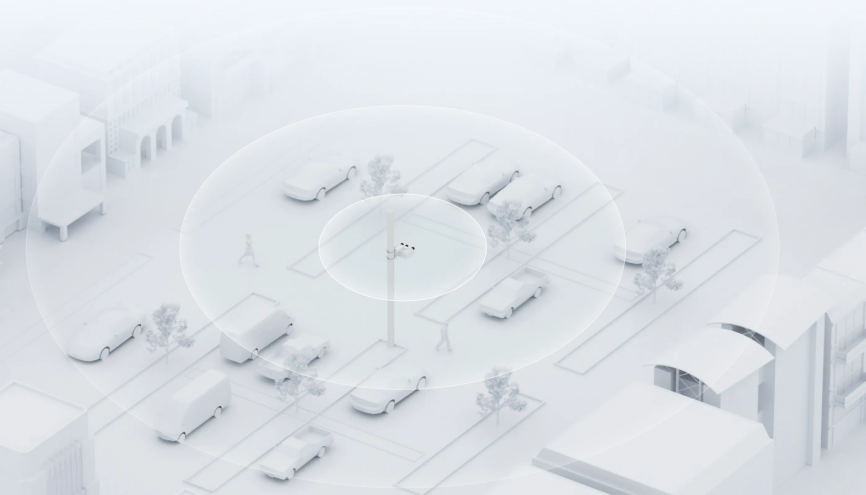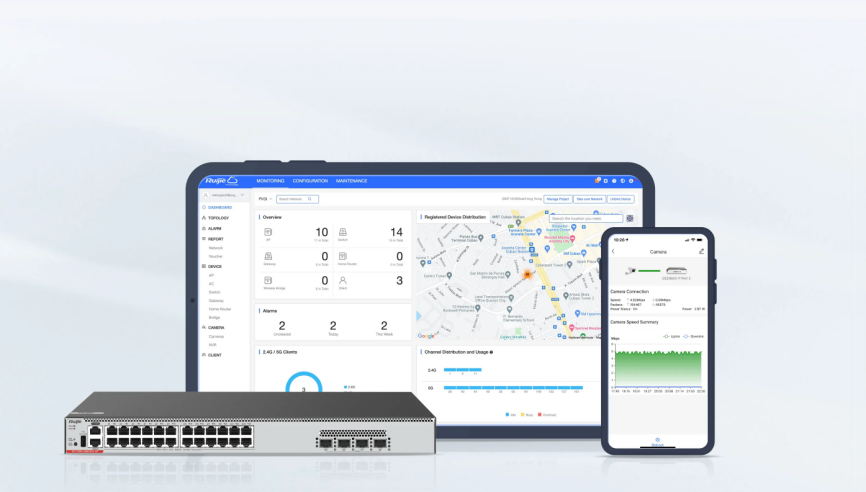PoE stands for Power over Ethernet, which means power supply through Ethernet. Switches with PoE, or Power over Ethernet switches, are network switches that can transmit both data and power through Ethernet cables. This technology allows devices such as IP phones, wireless access points, and security cameras to receive both network connectivity and power supply simultaneously, thus simplifying wiring requirements and installation process, improving system flexibility and reliability. In situations with tight deployment schedules and complex wiring, choosing Switches with PoE can greatly reduce costs and achieve efficient implementation.

In Which Scenarios Are Switches with PoE Widely Applied?
In daily life, Switches with PoE are widely used in access control systems, surveillance systems, and point-of-sale equipment scenarios. Besides these, Switches with PoE devices are also frequently used in the following scenarios to improve network manageability and flexibility, achieving convenient network deployment.
Educational Institutions and Enterprise Networks: In campus or enterprise networks, Switches with PoE are commonly used to connect and power IP phones, cameras, wireless access points, and other devices.
Remote Energy Monitoring: In some remote areas or locations requiring remote monitoring, using Switches with PoE can conveniently integrate power and data transmission on a single network cable, achieving remote energy monitoring.
Wireless Network Base Stations: Switches with PoE can provide power support and network connectivity for wireless network base station equipment, such as wireless routers and wireless access points. This reduces power cable complexity, making wireless network deployment more flexible.
Industrial Automation: In the field of industrial automation, various sensors, controllers, and actuators need to be networked. Switches with PoE can provide data transmission and power support for these devices through a single network cable, simplifying wiring structure and reducing maintenance costs.
Medical Equipment Networks: Medical equipment usually needs to be networked, and some devices may require remote monitoring. Switches with PoE can be used to provide network connectivity and power support, ensuring normal operation of medical equipment.
Intelligent Transportation Systems: In intelligent transportation systems, such as city surveillance and traffic signal control, using Switches with PoE can achieve device network connectivity and power supply, improving system reliability and stability.
Smart Home: Smart home devices, including smart lighting and thermostats, can benefit from PoE technology. Switches with PoE provide power and data transmission for these devices, making home networks more intelligent and convenient.
What Are the Configuration Challenges of Switches with PoE?
The challenges in configuring Switches with PoE mainly focus on several aspects, including selecting suitable switches, ensuring stable power supply, handling power supply distance limitations, and configuration and management.
Selecting Suitable PoE Switches
Switches with PoE come in various types, including Fast Ethernet, Gigabit, Full Gigabit, and both unmanaged and managed types. When selecting, factors such as network scale, number of devices, and bandwidth requirements need to be comprehensively considered. For example, for HD surveillance equipment, Gigabit or Full Gigabit switches may be needed to meet high bandwidth requirements. Additionally, PoE power supply standards and port numbers vary, with power standards including IEEE 802.3af and IEEE 802.3at (also known as PoE+), different standards have different output power, suitable for devices with different power requirements. Port numbers come in options like 4-port, 8-port, 16-port, etc. Therefore, in formal configuration, the number of devices, location, and power supply requirements need to be comprehensively considered to determine suitable device models.
Ensuring Stable Power Supply from PoE Switches
To ensure stable operation of Switches with PoE power supply function, standard Switches with PoE should be selected first. These switches have internal PoE control chips with detection capabilities, ensuring that terminal devices are PoE-compatible PD devices before power supply, thus avoiding damage to connected devices. Additionally, on the device side, connecting too many high-power devices should be avoided to prevent insufficient power supply affecting device response. Therefore, during actual deployment, power supply solutions need to be reasonably planned based on device power and quantity.
Handling Power Supply Distance Limitations
The maximum transmission distance of Switches with PoE mainly depends on data transmission distance. When transmission distance exceeds 100 meters, data delays and packet loss may occur. Therefore, in actual installation, transmission distance should preferably not exceed 100 meters. However, some high-performance Switches with PoE can support longer transmission distances, such as 250 meters. Meanwhile, cable quality also affects power supply distance. Standard-compliant national standard network cables should be selected, ensuring their resistance values are within reasonable range.
Configuration and Management
The functional configuration of Switches with PoE may include power configuration, operating standard configuration, priority configuration, etc. These configurations need to be reasonably set according to actual requirements to ensure normal device operation and power supply stability. Meanwhile, during configuration and management, various issues may be encountered, such as PoE switches not supplying power, PD intermittent power outages, or reloading. These issues may be caused by various reasons, such as PoE component problems, incorrect configuration commands, wiring issues, etc. Therefore, deployment vendors need to have certain troubleshooting capabilities to resolve issues promptly.
Generally speaking, well-known mature vendor brands can provide reliable installation and maintenance services while ensuring equipment quality. For example, Ruijie Reyee provides diverse customized solutions, including Switches with PoE, based on users' specific needs. The devices offer outstanding data processing efficiency and smooth network performance, while also featuring advanced capabilities such as remote cloud management, further lowering maintenance barriers and enhancing the user experience.

In general, PoE switches hold an important position in modern network architecture with their features of integrated power supply, efficient management, remote control, and high security. With the development of IoT technology, the application scope of PoE switches will further expand, contributing to building a more intelligent and efficient network environment.

Deployment Considerations for Ethernet Switch with PoE
Compatibility: When selecting an Ethernet Switch with PoE, ensure it's compatible with connected devices. This includes ensuring both the switch and terminal devices support PoE technology and have matching power requirements.
Power Requirements: Different devices may have different power requirements, so switches with appropriate power output capabilities should be selected based on actual needs.
Security: When using Ethernet Switch with PoE, both power and data security need to be considered. Ensure the switch has appropriate overload and short-circuit protection features, and implement proper data encryption measures to protect network data.
Overall, Ethernet Switch with PoE is a powerful and flexible network device that combines data transmission and power supply functions, providing convenience for various application scenarios. When selecting and using one, prioritizing high-quality brands and considering compatibility, power requirements, and security can help achieve the desired goals with a cost-effective solution.
Featured Articles
- Networking Tools for Retail Stores: The Core Value of Cloud-Managed APs












